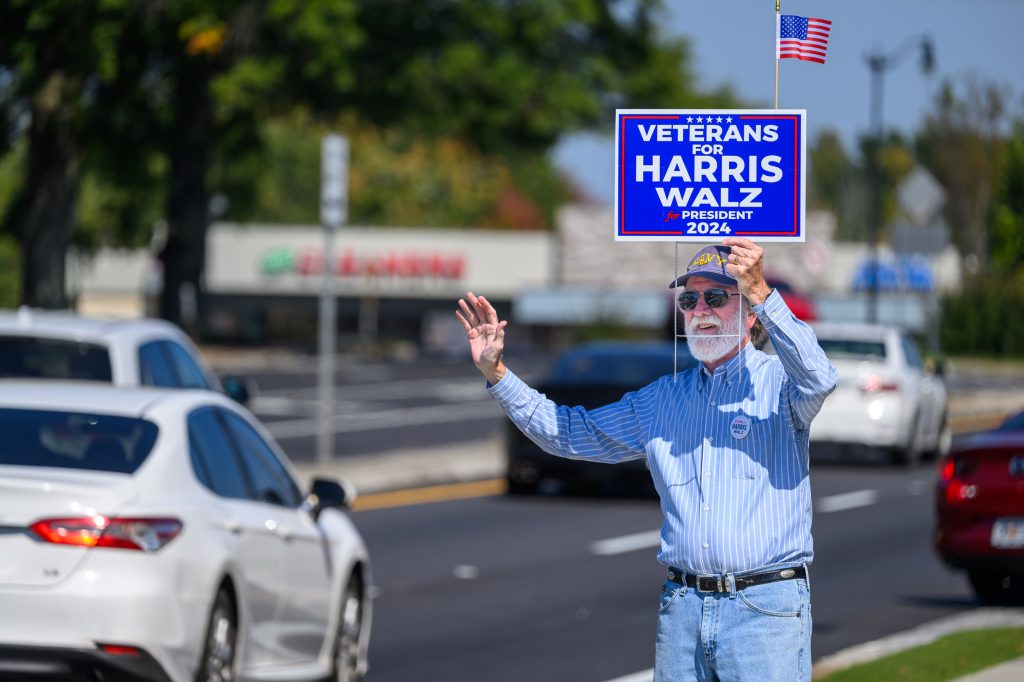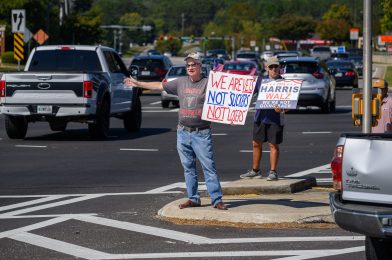Caption: Bill Clothier, left, and Gary Dichtenberg, right, join other supporters of Harris and Waltz as they hold signs and wave to passersby at the intersection of Alpharetta Hwy and Holcomb Bridge Road in Roswell, Ga., Sunday, Oct. 13, 2024. Various subgroups gathered for a sign-waving event from 11 a.m. to 1 p.m. to promote their candidates before the upcoming election.
This morning, on her way to work, my wife Dorie called to give me a heads-up. She had spotted a crowd of about 30 to 50 Harris/Waltz supporters gathering at the corner of Holcomb Bridge Road and Alpharetta Highway. Since it’s just a short distance from our house, I knew I had to check it out. I grabbed my gear, put on my photojournalist hat, and set out to capture the event.

As a contributor to ZUMA Press, one of the largest independent press agencies, I had the opportunity to take some photos of the street campaign and quickly moved them to the wire service. You always feel satisfied when you see your work on the ZUMA Press homepage, knowing it’s being marketed to media outlets worldwide.
The Ethics of Photojournalism
When I say I “put on my photojournalist hat,” I’m talking about more than just picking up my camera. A lot goes into making sure the coverage is not only professional but ethical. As a member of the National Press Photographers Association (NPPA), I hold myself to the highest standards of journalism ethics.
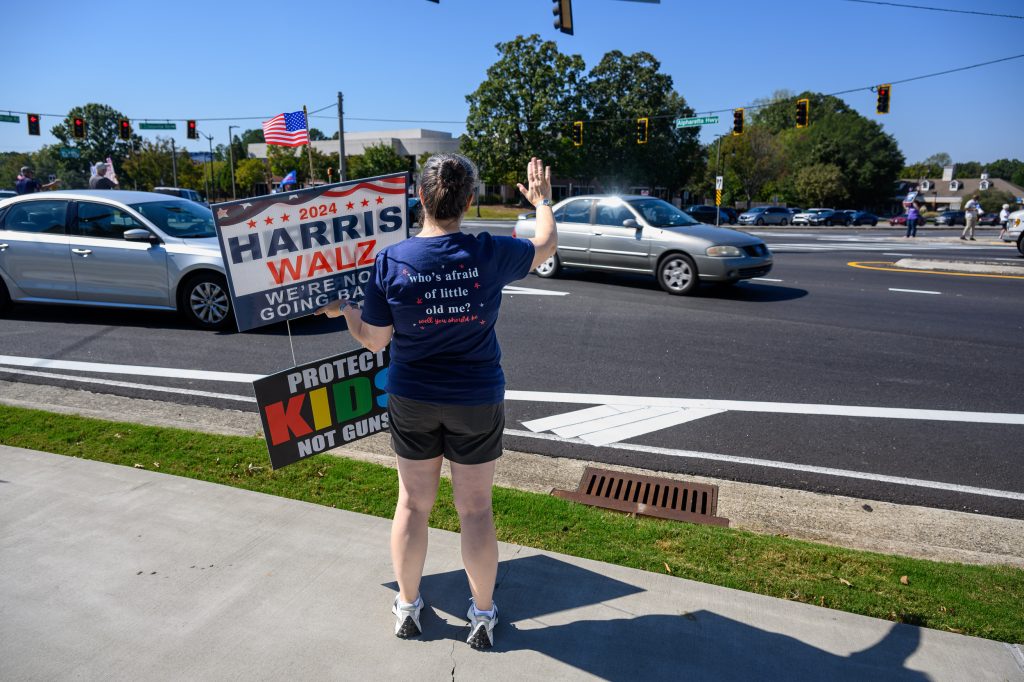
Here are a few key ethical considerations I kept in mind while covering this event:
- Accuracy and Context: It’s essential to ensure that the images I take accurately represent the event without distorting the facts. Whether the crowd is large or small, it’s important to frame the shot in a way that tells the story truthfully.
- Independence: Staying neutral is key. I’m not there to support any political candidate or push a particular narrative. My goal is to document what is happening, without influencing or interfering with the event.
- Respect for Subjects: Even in public spaces, I remain respectful of the individuals I photograph. I ensure that my actions don’t infringe on anyone’s dignity or privacy.
For anyone interested in the specific guidelines, NPPA’s Code of Ethics is a great resource and serves as a constant reminder of the responsibility we have as visual storytellers.
Crafting the Visual Story
When it comes to capturing a political event like this, my goal is to shoot a variety of images that can give viewers a comprehensive sense of what it was like to be there. This is something I often talk about in my blog.

Here are some of the different types of shots I typically focus on during events like this:
- Wide Shots: These provide a sense of scale and show the crowd in its entirety. Readers or viewers need to understand the size and energy of the event.
- Medium Shots: These are great for capturing the dynamics between the participants, like small groups talking, handing out signs, or engaging with passersby.
- Detail Shots: Whether it’s a close-up of a campaign button, a sign, or a passionate expression on someone’s face, details help to humanize the story and draw people in.
Each of these shots plays a role in telling the overall story. It’s not just about the crowd size or the location; it’s about the people, their motivations, and their engagement with the event.
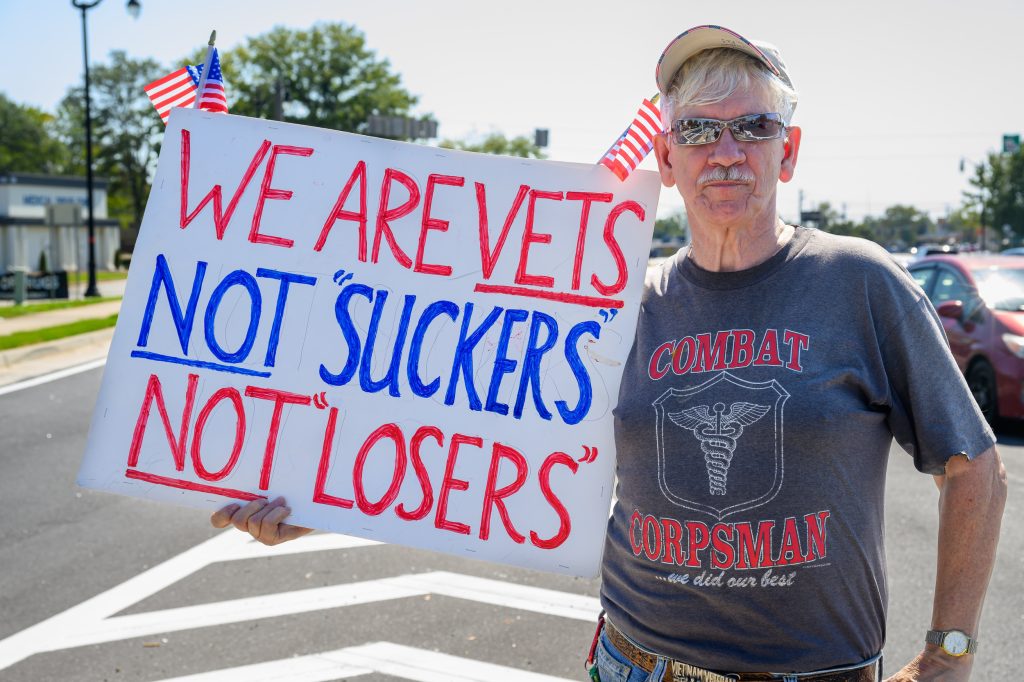
The Importance of Captions
A photo without context can easily be misinterpreted, which is why writing strong, accurate captions is a critical part of the job. Captions should provide:
- Who: Identify key individuals in the frame, if possible.
- What: Describe what’s happening in the scene.
- When: Date and time are crucial to help provide context.
- Where: Mention the location, especially if it’s relevant to the event.
- Why: If relevant, provide insight into why the event is taking place.
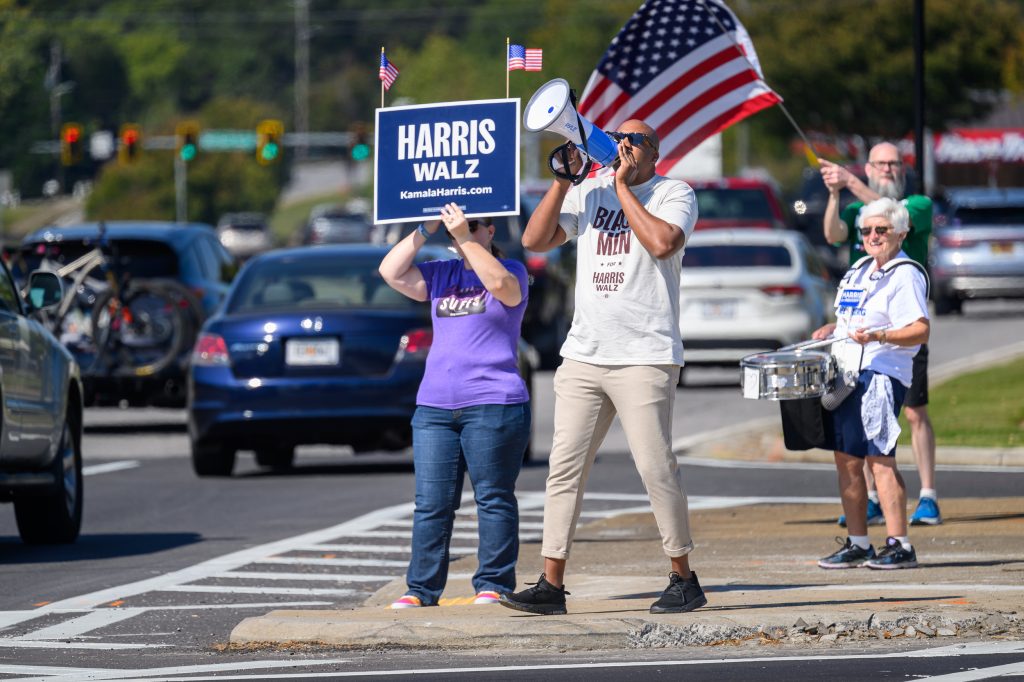
For example, if I take a photo of a group holding signs, the caption might read:
“Supporters of the Harris/Waltz campaign gathered on October 13, 2024, at the corner of Holcomb Bridge Road and Alpharetta Highway in Roswell, GA, to rally support for their candidates ahead of the upcoming election.”
Writing captions with care ensures that the images maintain their journalistic integrity and are more likely to be used by reputable outlets.

Conclusion
Covering the Harris/Waltz Street campaign near my house today was another reminder of the importance of ethical, responsible journalism. It’s not just about the photos I take, but about how I take them and how I present the story to the world.
Reflecting on the images I captured today, I’m reminded of my unique privilege to document moments like this and share them with a global audience. Every event tells a story; as a visual storyteller, it’s my job to tell it truthfully and ethically.
